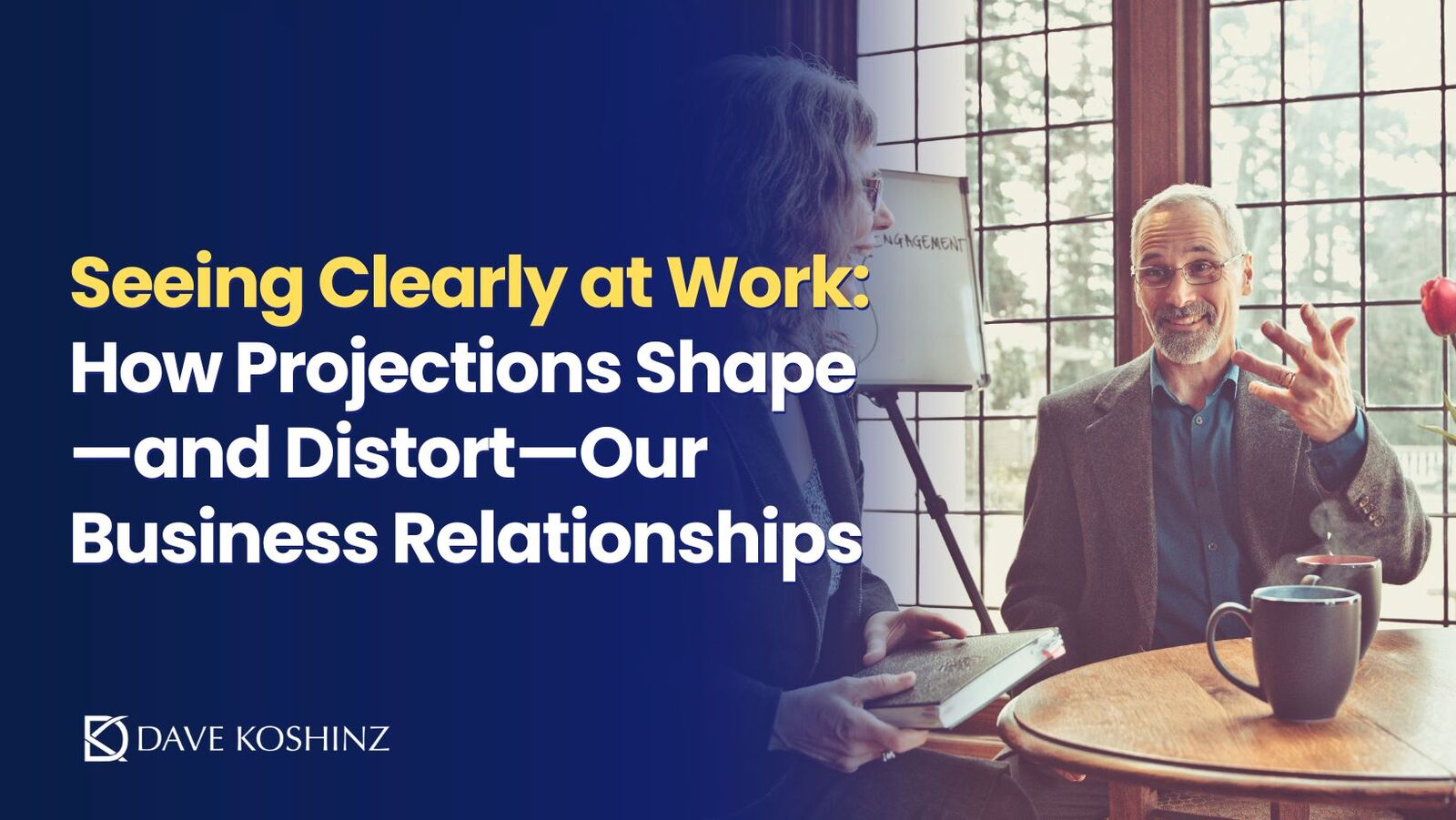

You may not have realized it, but what you were experiencing was likely a projection—and it’s one of the most powerful, unconscious forces shaping your work life.
Understanding projections—how they operate, when they’re helpful, and when they distort reality—can dramatically improve how we lead, collaborate, and grow.
What Is Projection?
In psychological terms, projection is the unconscious process by which we attribute parts of ourselves—emotions, motives, fears, desires—to others. It’s a way the mind externalizes what feels difficult or uncomfortable to hold internally.
As Freud first proposed and modern neuroscience confirms (Solms, 2020), projection isn't merely a defensive behavior—it’s part of how we navigate the world. Our brains are prediction machines, constantly constructing reality through the lens of past experience (Barrett, 2017). When we lack complete information (and we usually do), we fill in the gaps with familiar narratives—often without knowing it.
This works well in small doses. It helps us anticipate behaviors, build trust, and empathize. But when unchecked, projections can distort perceptions, derail teams, and stunt leadership growth.
Common Projections in the Business World
Here are some familiar examples:
1. The Boss as Parent or Authority Figure
It’s incredibly common for employees to project parental roles onto their managers—expecting approval, fearing abandonment, or rebelling against perceived control. A leader may unwittingly step into a “father” or “mother” figure role, becoming a container for unspoken emotional needs. This can strain relationships and blur boundaries.
“We don't see things as they are, we see them as we are.” – Anaïs Nin
2. The Golden Colleague
Sometimes we project our ideal self onto others—seeing a team member as the embodiment of confidence, competence, or charisma. This golden projection can be motivating—sparking admiration and aspiration. But it can also create imbalance. We may over-rely on that person, avoid honest feedback, or collapse our own sense of worth in comparison.
Golden projections often say more about what we yearn to develop in ourselves than who the other person truly is.
3. The Difficult Client as Bully or Critic
If we carry unexamined insecurities or past wounds, we may project harshness or judgment onto demanding clients—even if their feedback is neutral. Over time, this can trigger avoidance, over-accommodation, or defensiveness, harming the relationship and reducing our professional clarity.
4. The High Performer as Threat
In competitive cultures, we may project our fears of inadequacy onto high performers, labeling them as arrogant or cutthroat. This projection can fracture teams and lead to toxic undercurrents, especially when not named or examined.
Why Projections Happen: The Neuroscience
Lisa Feldman Barrett’s work in How Emotions Are Made (2017) explains how the brain constructs reality by drawing from prior experience, stored emotion, and contextual cues. Projections are the brain’s way of “predicting” who people are based on fragmented inputs.
In leadership settings, this means we often interpret others' actions not based on their actual intentions, but based on what they trigger in us.
When Projections Cause Problems
The challenge with projections is they often remain unconscious. And because they feel true, they can drive big decisions—who to hire, who to trust, who to promote—without ever being examined.
Unchecked projections can lead to:
Miscommunication: We react to someone based on who we imagine they are, not who they really are.
Misplaced expectations: We expect our manager to be our cheerleader or therapist, and feel let down when they aren’t.
Poor performance reviews or unfair treatment: We judge someone not on data, but on how they made us feel.
Burnout in leaders: Especially when absorbing golden or parental projections without the power to set limits.
The Trap of Golden Projections
While negative projections spark conflict, positive projections can be just as tricky. A charismatic leader may receive constant praise and inflated loyalty, which can obscure honest feedback and inflate ego. Meanwhile, others may disown their own capacity to lead or shine, believing “they’re the brilliant one, not me.”
Golden projections can:
Create blind spots for leaders
Reduce team accountability
Hinder the growth of emerging talent
Mask subtle resentment or dependency
So What Can We Do?
1. Name the Pattern
Awareness is the first move. Ask:
Am I reacting to this person, or to a story I’ve created about them?
You can ask yourself, "How true is this story?" "What is the evidence?"
Does this emotion feel larger than the situation calls for?
For leaders: Invite your team to explore this gently. “Sometimes we see what we expect to see. How might our assumptions be shaping this?”
2. Look Within
Ask yourself:
What part of myself am I putting on them?
What emotion am I avoiding or offloading?
3. Support Psychological Safety
In workplaces with high trust, projections lose their grip. Foster curiosity, normalize emotion, and create space for people to check assumptions without fear of shame or reprisal.
Psychological safety researcher Amy Edmondson (2019) found that teams with open dialogue and inclusive leadership were more adaptive, innovative, and resilient.
4. Use Coaching & Reflection
Coaching can help surface projections in a safe container. Journaling, feedback exercises, and 360 reviews also create mirrors that disrupt self-deception.
“Until you make the unconscious conscious, it will direct your life and you will call it fate.” – Carl Jung
5. Respond When Projections Land on You
If someone projects onto you, don’t dismiss it outright. Instead:
Clarify expectations
Set compassionate boundaries
Reflect back what you’re seeing with care: “It sounds like you might be expecting me to solve something that’s really in your hands. How can I support without taking over?”
Final Thoughts: Projections Are Normal—But Not Neutral
We all project. It’s part of being human. The question isn’t whether you do—it’s how aware you are of it. The best leaders aren’t projection-free; they’re projection-aware. They regularly pause, reflect, and ask: What part of this is mine?
By creating work cultures that prize self-awareness and emotional literacy, we can transform projections from hidden saboteurs into powerful tools for insight and growth.

